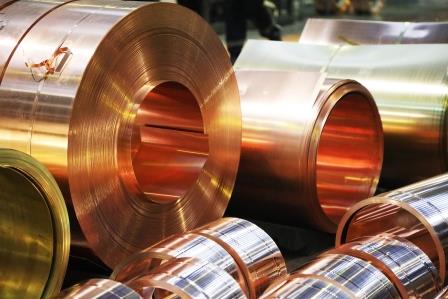

Trade war worries that fanned fears of a possible recession adversely hit the global economy, particularly that of the US and China. The prolonged uncertainty about trade policies between the world’s two largest economies also hit global trade and demand for commodities.
Escalation of hostilities has led to most industrial metals lose ground, suppressing prices in a tight range near its multi-year lows.
Chinese industries are the key consumers of all base metals. The trade dispute has roiled the Chinese manufacturing sector and demand for industrial commodities.
The industrial red metal, copper, gained in the first four months of the year on optimism that the two sides would resolve the dispute and spur demand.
But, prices dropped to a two-year low later as there were no signs of a breakthrough.
Aluminium, a widely used industrial metal in the automobile industry, dipped to a near three-year low at the key London Metal Exchange (LME) platform.
Escalating US-China trade tensions and subdued demand from the automobile sector weighed down the sentiment.
Both zinc and lead prices have remained on the back foot during the best part of 2019. Worries of supply shortage have balanced with feeble industrial demand from China. Low demand from the automobile sector and supply bottlenecks have kept the market under deficit.
However, unlike other base metals, nickel prices have gained more than 45 percent at LME since the start of 2019.
Nickel is insulated from major fall on buoyant outlook due to increased appetite from the stainless steel industry and supply concerns from the top producer Indonesia.
At the same time, IMF predicts that the weak global growth outlook is likely to continue for the rest of the year and next. The agency cut its 2019 global growth outlook by 0.3 percentage points to 3 percent. This is the slowest pace of growth since the 2008-2009 financial crisis.
The agency also added that the US, China, Eurozone and Japan, the four largest economies of the world, will remain under pressure over the next few years. The US will further slow down to 2.1 percent from its present 2.4 percent by next near.
The Chinese economy will slow gradually to post a growth rate of 5.5 percent by 2024, down from its current rate of 6.1 percent. Manufacturing crisis, especially in the automobile sector, will keep Eurozone economic growth slower than before.
The agency estimates the Eurozone growth rate to be 1.2 percent this year, revising its previous forecast of 1.3 percent.
It also predicts that the economic expansion in countries that are far removed from the US-China trade war will also moderate this year.
The continued downbeat in manufacturing and other areas of the economy hint at a further weakness in the world’s top metal consumer. Also, market experts are pessimistic about China’s economy, even though the country recently posted some bright economic numbers.
Recent measures like a tax cut and infrastructure spending are likely to translate into firmer demand for base metals in the coming quarters in India.
Investors are now watching the trade deal developments to get an indication of the direction the global economy will move in. A positive outcome will boost economic activity and improve the demand for base metals.
Meanwhile, recent reports say the long-awaited trade deal could be delayed until December, making investors cautious on commodities again.
First published in MoneyControl.